It often happens that inexperienced gardeners face various post-growing problems when planting potatoes. While this can be frustrating, most mistakes can easily be avoided with proper plant care and by considering various factors. If you also have to deal with this or plan to grow potato plants, the following information and tips can help you.
What should you consider before planting new potatoes?
As a rule, potatoes are not particularly demanding after planting if you have done everything right. However, most potato varieties require dry and well-prepared garden soil for healthy plant growth. In addition, there is a risk of planting them too early when the soil is still too wet. This would likely result in rot rather than germination. The best time to start sowing is about two weeks after the last frost in spring. However, if it rains too often in the spring months, you may have to push back the planting date even further.
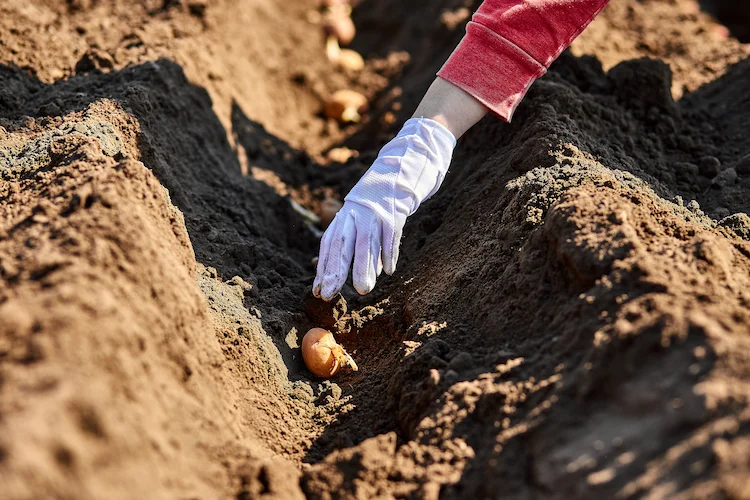
An important step in such cases would be to check the garden soil for moisture. In the case of soil compaction or clay soil, you should be patient for a while and postpone cultivation. As for the soil temperatures before planting, they should be at least 10 to 15 degrees Celsius. Again, this doesn’t necessarily guarantee a good harvest, as there are common potato growing mistakes that you need to avoid. This should prompt you to consider a few key influencing factors in order to achieve the best possible yield.
What mistakes are common when growing potatoes?
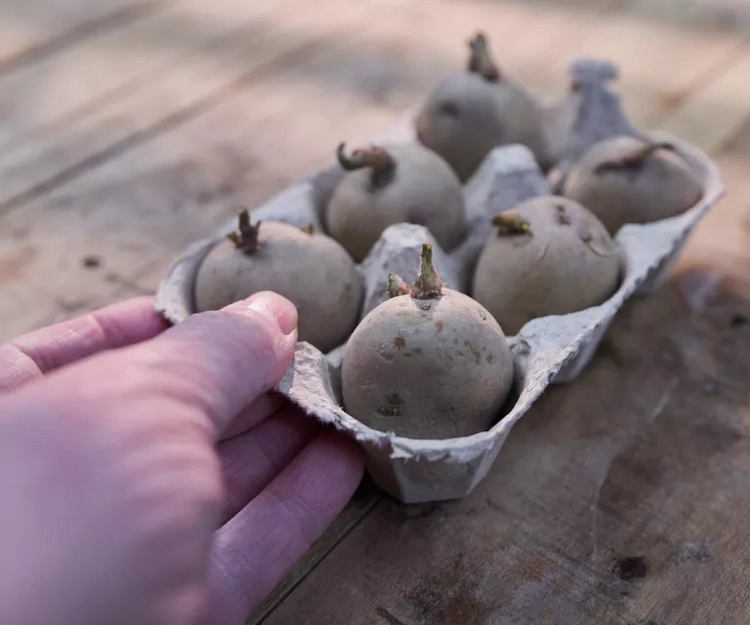
Many home gardeners make the mistake of growing the bulbs too early, too close, or too shallow in their garden beds. In addition, the potato bases, or the so-called potato eyes, can be missing during cultivation. Overwatering is also a common mistake, due to a variety of factors. Therefore, if you are inexperienced or impatient, it would be useful to learn how to properly plant potatoes to prevent future complications. This ensures that all your efforts have paid off so that you can enjoy healthy vegetables from your own garden. Here are some common problems and what you need to do to solve them.
How can wrongly chosen seed potatoes be replaced with the right ones?
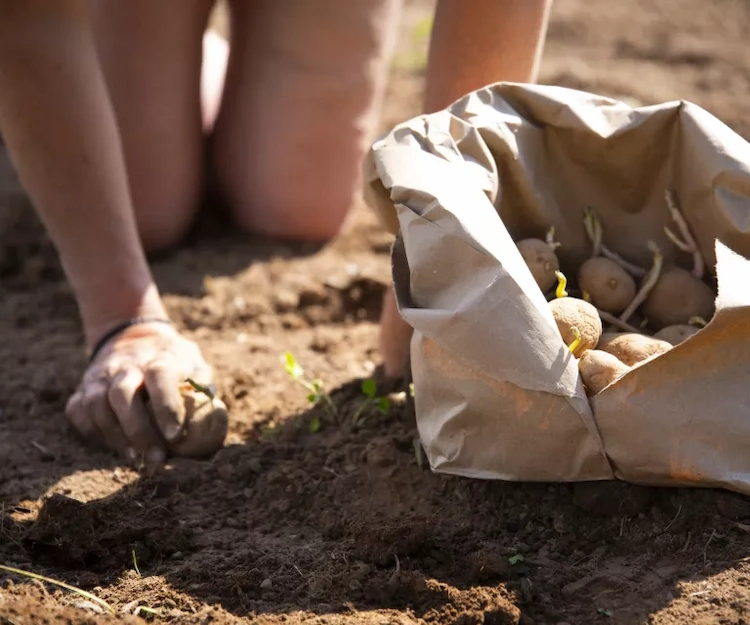
It is very important to choose suitable seed potatoes before planting. As already described above, these should first of all have the appropriate germination approaches. In fact, the potato eyes are the spots from which sprouts emerge, something that inexperienced gardeners often forget to look for before planting their potatoes. In such cases, the probability of poor germination is high. It is also possible that the potatoes will not germinate despite the presence of eyes. Therefore, you should force seed potatoes to grow about a month before planting them in the garden by leaving the sprouting roots undamaged. Accordingly, you must handle such sprouting potatoes with care so that no sprouts break.
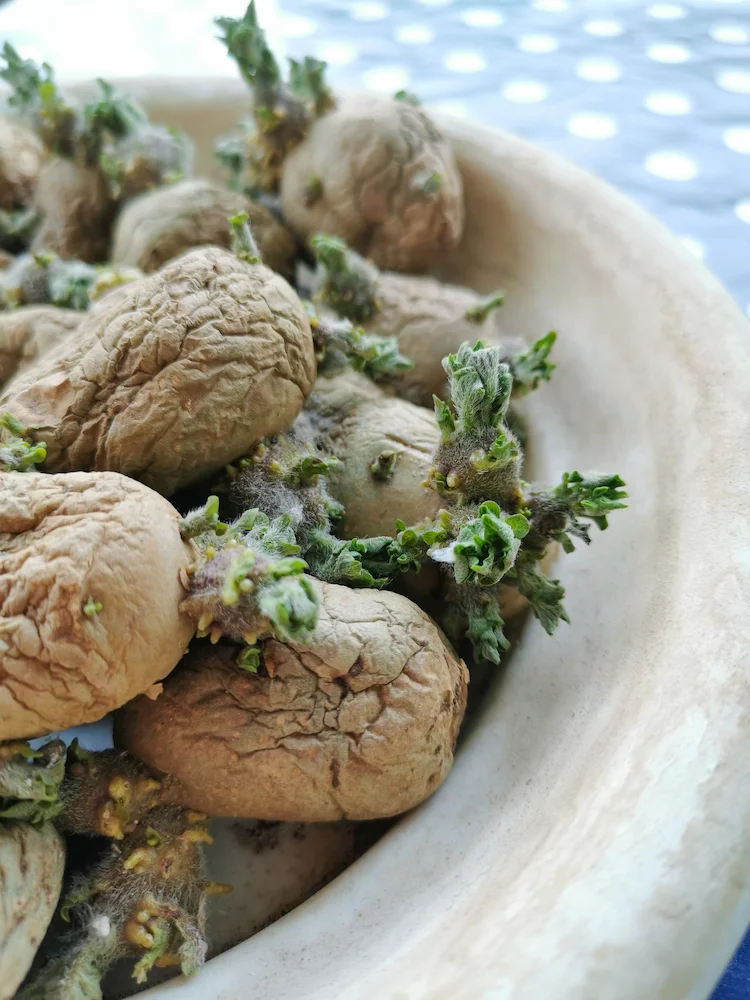
In addition, you should also consider size when choosing seed potatoes, with optimal seed potatoes being about the size of larger eggs. Also, avoid growing potatoes from grocery stores that are sold for eating. These are often treated with chemicals that prevent them from germinating, so many never get to it. In addition, when you plant store-bought potatoes, you also run the risk of introducing diseases into your vegetable garden. For this reason, it is important to use certified and disease-free seed potatoes.
Why not plant potatoes too close together?
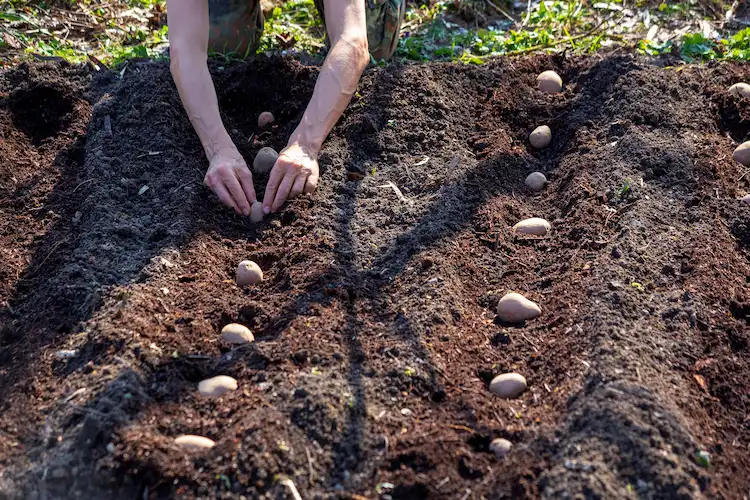
Although it can be tempting to have multiple plants in the garden bed for a bountiful harvest, this is undesirable when growing potatoes. You shouldn’t overcrowd your beds with this, as potatoes need more space to grow to their full potential. Instead, strive for balance by sticking to an optimal spacing of 30-40cm when growing. Planting potatoes that are close together would lead to a number of problems stemming from nutrient deficiencies. Because potato plants compete for soil nutrients, they should also be able to grow as a collective. Otherwise you will most likely end up with stunted, leggy and misshapen vegetables.

In addition, you should aim for a distance of at least 60 cm between the rows. However, this also depends on the potato varieties. Normally, new potatoes are smaller and can be planted at a distance of 30 cm. For varieties that stay in the ground longer and that you harvest in late season, the distance between the potato plants should be at least 40 cm. When growing in planters or tubs, be careful not to pack in too many seed potatoes for a larger yield.
What happens if you don’t plant the potatoes deep enough?

Growing potatoes too shallow is another common mistake that could result in poor or no plant growth. Getting the seed potatoes too close to the surface will cause problems, so ideally place them at a depth of 20cm. In addition, the overlying soil should be at least 10 cm high. Potato plants will pile up during the growing season and if planted too shallow they can be exposed to sunlight. This turns the vegetables green and inedible, while also making them more susceptible to pests. However, you should also not dig too deep when planting potatoes. This can result in seed potatoes freezing in garden soil that is too cold and damp and growing slowly or not at all.
How can underwatering or overwatering be prevented?

After growing potatoes, it is common for many beginning gardeners to engage in over-watering. However, overzealous watering of seed potatoes can lead to complications or even the complete loss of the crop. At worst, overwatering could cause rotten potatoes in the soggy garden soil. Although the vegetable likes to grow in constantly moist soil, flooded soil, especially during cold periods, could cause a lack of oxygen. Excessive watering can also cause the bulbs to deform, increasing the risk of powdery scab.

To prevent all of this, you should water seed potatoes moderately right after growing them. Once established and producing flowers, you should maintain moisture levels by watering 3 to 5 inches weekly during dry periods. You should stop watering when you notice the plant leaves turning yellow and wilting just before harvest time. In addition, overwatering in the initial and final stages or insufficient watering in between can cause deformation. Check the soil’s moisture level by poking your fingers to a depth of about 6 inches.
Plant potatoes and harvest too early
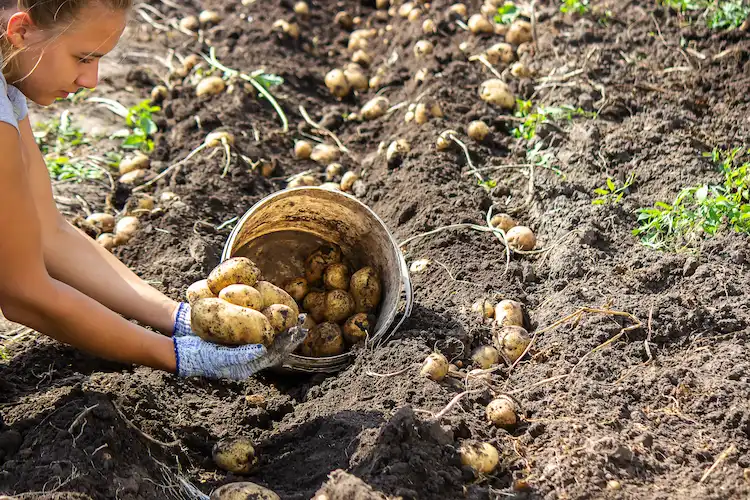
Finally, a common mistake is to harvest grown potatoes at the wrong time. However, you should wait until half of the plant has completely died before harvesting. At this stage, the potatoes form a thicker skin. However, it is also important to note that the best time to harvest potatoes depends on the variety of potato being planted. Baby potatoes, or early potatoes, should usually be ready about two to three weeks after flowering. On the other hand, mature strains take two to three weeks after their foliage has turned yellow and withered.